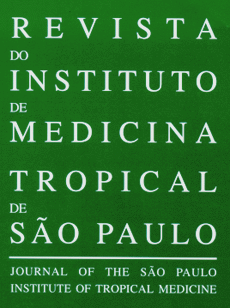No final da década de 60, caramujos da espécie Melanoides tuberculatus, originários do nordeste africano e sudeste asiático, foram introduzidos no Brasil. Os primeiros registros de espécimes infectados com cercárias foram feitos no Estado do Rio de Janeiro em 2001. O presente estudo relata a ocorrência de M. tuberculatus infectados com larvas de trematódeos na cidade do Rio de Janeiro. O sedimento dos criadouros foi coletado e peneirado através de malhas de 0,25 polegadas. Os caramujos foram transportados em recipientes com água dos criadouros, sendo medidos e posteriormente individualizados. Eles foram expostos à luz e temperatura artificiais para induzir a emergência cercariana. As cercárias mais ativas foram processadas pelos métodos de coloração diferencial e de impregnação por nitrato de prata. Os caramujos negativos foram subsequentemente dissecados. Aproximadamente 700 caramujos foram coletados. Seu comprimento variou de 1,2 a 3,3 cm. A taxa de prevalência foi de 15,76% apesar de 53,76% dos caramujos estarem infectados em uma das áreas. Os caramujos estavam infectados com rédias e cercárias do tipo pleurolofocerca. A morfologia e a quetotaxia cercarianas foram compatíveis com as da família Heterophyidae principalmente devido à presença de nadadeiras medianas dorsais e ventrais e à ausência de receptores sensoriais CI dorsais.



